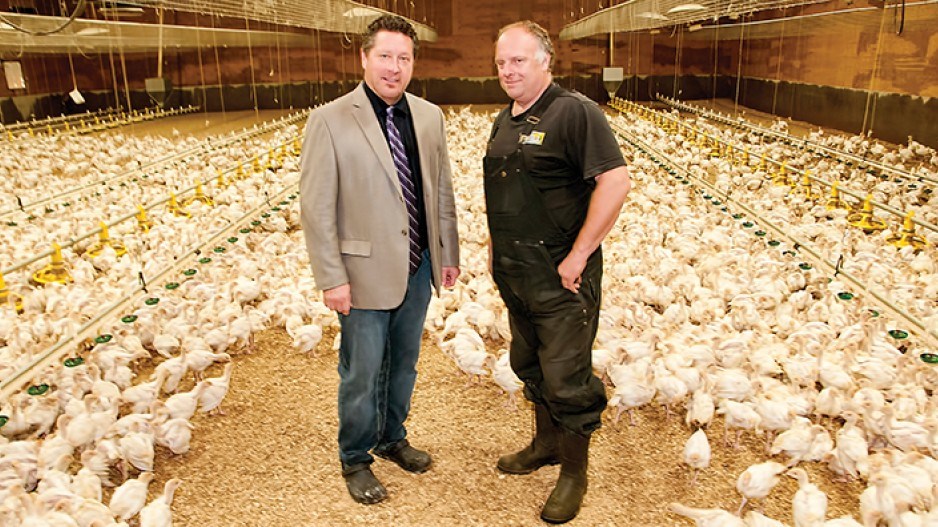Amid Surrey’s real estate construction boom, a rookie Surrey councillor is pushing to keep the city’s agricultural land base from getting lost in the shuffle.
Mike Starchuk, who is also the chairman of the city’s environmental sustainability advisory committee and the agriculture and food security advisory committee, said the importance of local farmland hit him one day while he was relaxing at home.
“I open up a bag of snap peas and I’m dipping them into some ranch dressing, and all of a sudden I read the packaging and it says these things come from China,” Starchuk said. “I bought them for $1.75; they’re plastic-wrapped and five ounces, and I think, ‘What kind of a carbon footprint did it take to get these snap peas to my kitchen?’”
Starchuk said the city is now in the first phase of rolling out a number of programs that will help preserve and properly manage the city’s farmland to move away from relying heavily on outside sources of food.
About a third of Surrey’s 68,000 acres are part of the Agricultural Land Reserve (ALR). In addition to lands within the ALR, there are about 1,000 hectares of A1-zoned land, which makes it usable for agricultural purposes but which is also readily available to be zoned for other purposes.
Starchuk said despite the real estate boom, the city has not given any ALR land away to developers since he was elected in last November’s municipal vote. The city has a “two-for-one policy,” much like a land swap. For example, if a buyer wanted to remove 10 acres out of the ALR, he or she would have to offer up 20 other acres he or she owned from somewhere else in the city that can be added to the ALR.
Mike Bose, a fourth-generation Surrey farmer who is also the founder and vice-chairman of the agricultural advisory committee to council, said there’s room for both Surrey’s real estate boom and a thriving agricultural sector.
“I believe the two can mutually coexist,” Bose said. “That’s the strength of the land reserve. The real estate boom obviously puts pressure on the ALR and it does negatively affect values for people wanting to get into agriculture. But the ALR tempers that so we’re somewhat isolated from that real estate boom.”
Bose served as chairman of the agricultural advisory committee – the first of its kind in the Lower Mainland – for more than 15 years. He acknowledged that development and agriculture are sometimes competing interests.
“There’s always going to be a certain number of speculators who buy farmland with an eye to getting it converted to something else.”
However, Bose added, councillors like Starchuk are helping protect farmers from what might otherwise be an all-encompassing land grab by developers.
“Recent decisions by council have helped to insulate agriculture by the mere fact that they support the land reserve and agriculture,” he said. “We’ve had very supportive councils now for the better part of 20 years, and the fact that they stand behind agriculture and the value of having one-third of the city as agricultural land in terms of the economic and social value to the community is great.”
Starchuk said he’s also focusing on the idea planted by those Chinese snap peas, working to get a pilot project off the ground with the aim of enticing young farmers to lease land for agricultural purposes.
“We know for a fact that the No. 1 drawback to somebody taking on the business of being a farmer is the amount of equity it takes to purchase the land,” he said. “At the same time we’re taking a stronger look at food security, because everybody through this last winter is very familiar with $10 heads of cauliflower.”
But bringing new farmers into Surrey’s agricultural sector is a balancing act, he continued.
“The question remains whether or not we can capture some new people out there and provide some lease opportunities out there for them. But we also want to make sure the leases are competitive so we also don’t have the young agrarian price out the people already in the market.”




